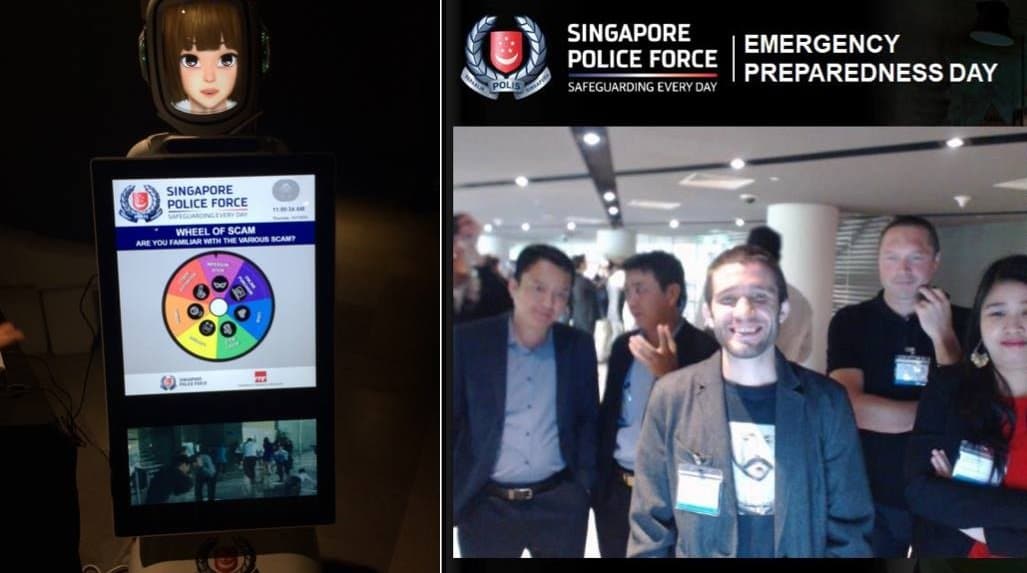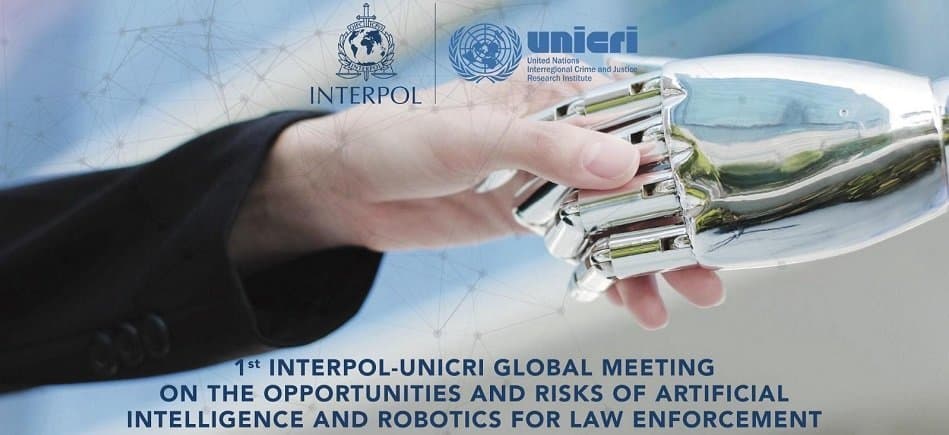Event: 1st INTERPOL – United Nations (UNICRI) Global Meeting on the Opportunities and Risks of Artificial Intelligence and Robotics for Law Enforcement
Date: July 11, 2018
Team Member: Daniel Faggella
Presentation: Machine Learning and Machine Vision – Cutting-Edge Trends and Implications in Law Enforcement
What Happened

I spoke at a joint United Nations-INTERPOL summit in Singapore about how machine vision technology may both help and pose challenges for law enforcement in the next two to four years. I talked about how machine vision might help law enforcement agencies detect anomalies and faces in security footage, for example. Machine vision is being applied in retail and manufacturing, and these use cases could have transferrable applications for law enforcement.
In addition, I discussed how AI can be used to generate visual media. Programmatically-generated images and videos could allow law enforcement to falsify evidence, and it could also allow criminals to create videos of events that never happened, leading to some disturbing consequences.
There were a number of others at the event from all across Asia and teams from Norway and the UK detailing where they are in terms of real-world use cases for AI in law enforcement. Singapore presented a demo of a robot that it hopes will be able to patrol its streets in the next five years.
For some reason (probably to make it less intimidating), it has a female face, and it has a number of interesting apps to help civilians learn about wound treatment and CPR. It can even take a picture of people to send to their friends. The robot took the photo on the right.
Other countries discussed how AI could be used to predict crime in various areas. Such a prediction could inform where police regularly patrol. Countries like Japan, Norway, and Singapore seem to be able to retain their AI talent for careers in law enforcement, as opposed to losing them to tech enterprises like what happens in the US.

This might be due to some kind of national pride or appeal to the greater good, but either way, it bodes well for these countries. Whether the US will be able to do the same given the value of AI skill in the private sector is yet to be determined. The US government is anxious about losing AI talent to the private sector, but it’s interesting to see that this isn’t the case in some countries.
Although these technologies can certainly be used nefariously (and that certainly was discussed at the event), I’d surmise that teaching law enforcement officials at least at the national level how this technology works is an aggregate good.
What We Learned
- Some countries do in fact have reasonably advanced AI applications in use in law enforcement today. That said, it’s not a regular part of policing yet in any country.
- There seems to be a burgeoning ecosystem of AI vendors in the law enforcement market. There was a demo room at the summit in which a lot of vendors offering machine vision and drone technology.
- INTERPOL as an organization seems to be waking up to AI as a relevant tool, and they’re investing in educational initiatives to teach law enforcement agencies about the possibility space of AI. INTEPROL is launching a technology radar, including a library of AI use cases.
I wrote about much of what I presented at the event in our article, AI and Machine Vision for Law Enforcement – Use-Cases and Policy Implications.
Header Image Credit: Medium


















